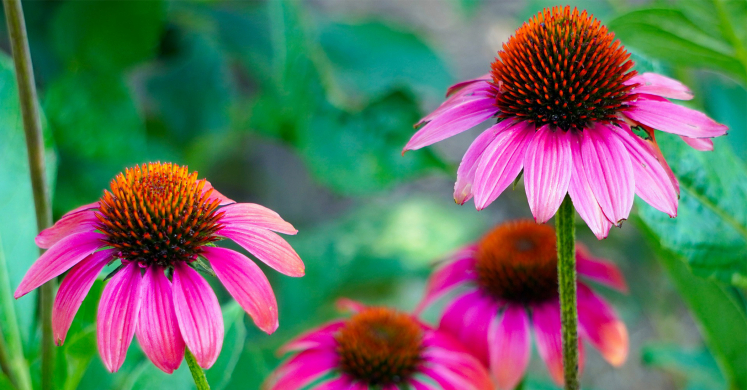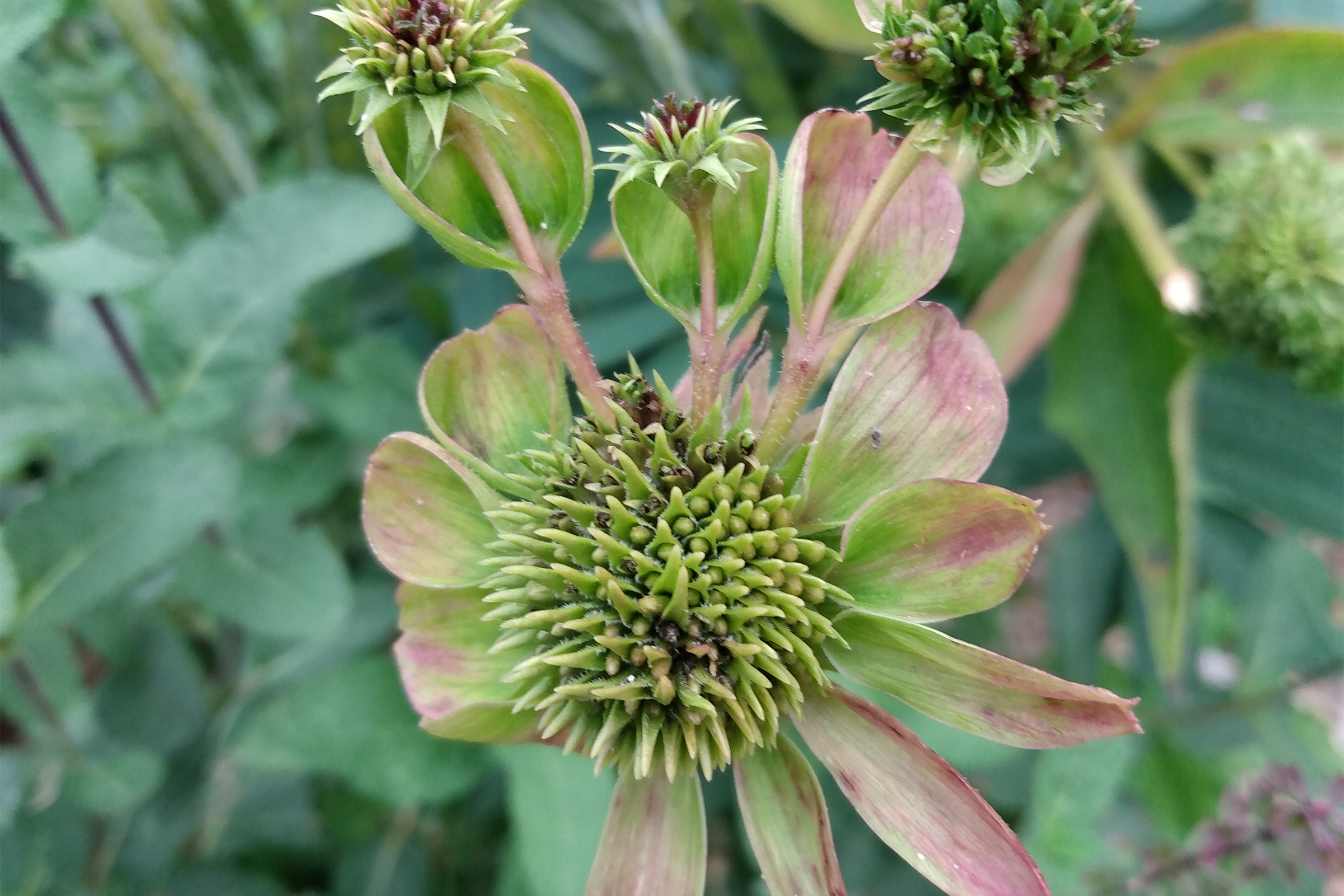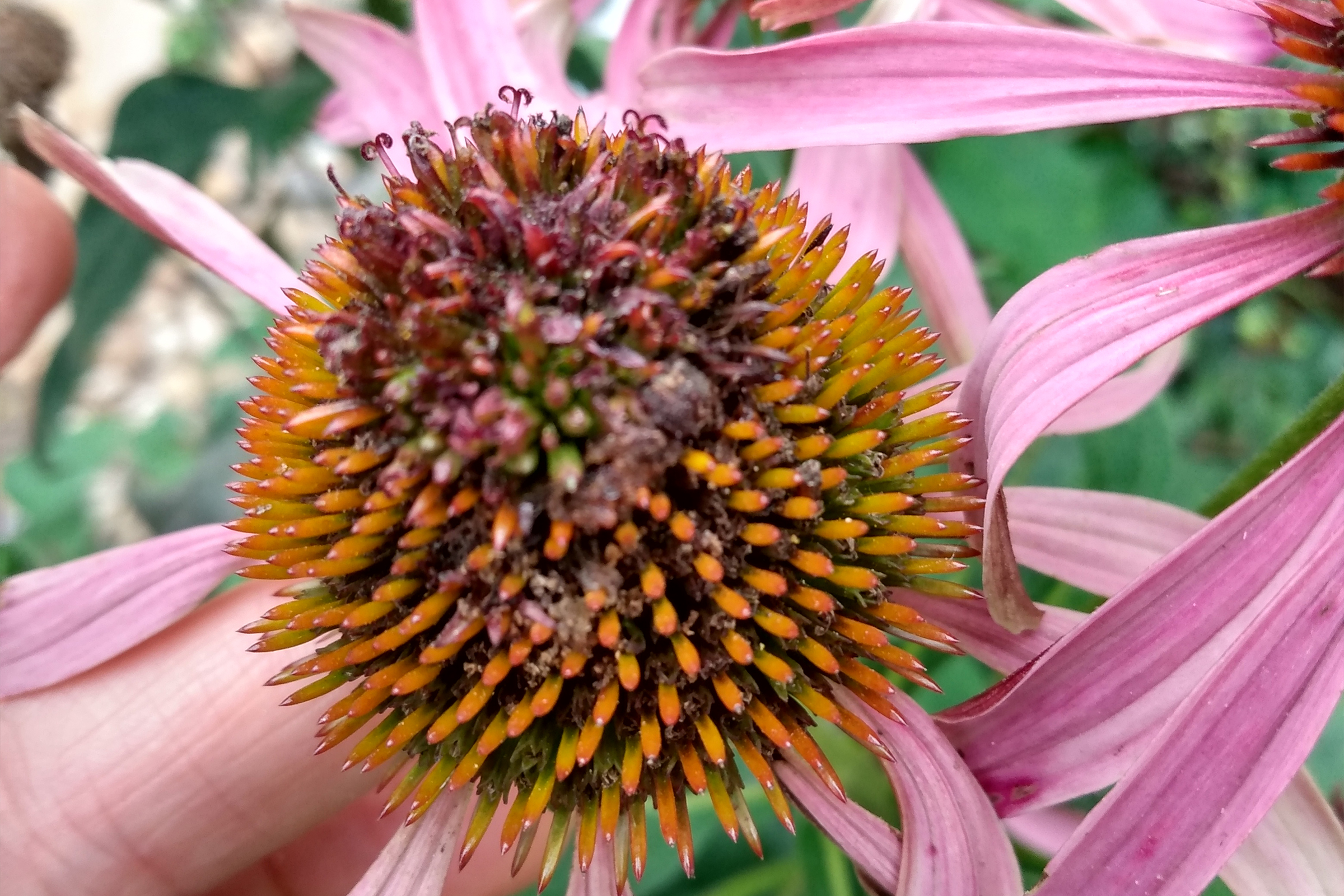Blog

Ask Dr. Phipps: Purple Coneflower Problems
Have a question about your perennials, houseplants or turf grass? Worried about pests in the garden, hydrangeas that won't bloom, or tomatoes that died on the vine? Dr. Phipps can help! Ask Dr. Phipps is a free service provided by Phipps Master Gardeners. Contact us with your questions and you may be featured in an upcoming blog post!
Q: My Echinacea plants had some problems this year. They have been growing just fine for the last four years, but this summer they started to show signs of disease. Can you tell me what is wrong with my Echinacea?

A: The first picture that you sent shows a deformed Echinacea flower with pale green or light yellow seed head and strange protrusions sticking out from the base of the flower. What you are seeing is a phenomena called virescence, or the greening of a plant part that is not normally green. In this case the flower head which is usually a pretty pinkish purple is now green. The other sign of a problem that the plant is showing is phyllody or the abnormal development of leafy structures where there should be flower parts (these are those strange protrusions). These are symptoms of a phytoplasma disease known as aster yellows. The disease is transferred by leaf hoppers and can spread to other as yet unaffected plants. There is no cure for aster yellows. The only thing to do is to remove the entire affected plant from your garden. Be sure to dig up all of the plants that are affected (including all of their roots) so that no more of your Echinacea are affected. The pytoplasma needs a “host” plant so by removing the plants you are removing the disease.

The second picture shows a normally colored Echinacea flower with a distorted area at the top of the seed head. This is a sign of feeding by the coneflower rosette mite. The mites live inside the seed heads so removing these parts will reduce mite populations and hopefully your Echinacea plants will survive. Spend some time this fall cleaning up your Echinacea beds removing the infected areas.
For more information about both aster yellows and coneflower rosette mites, see this article by Ohio State University Extension. They have some really great pictures of both of these diseases.

